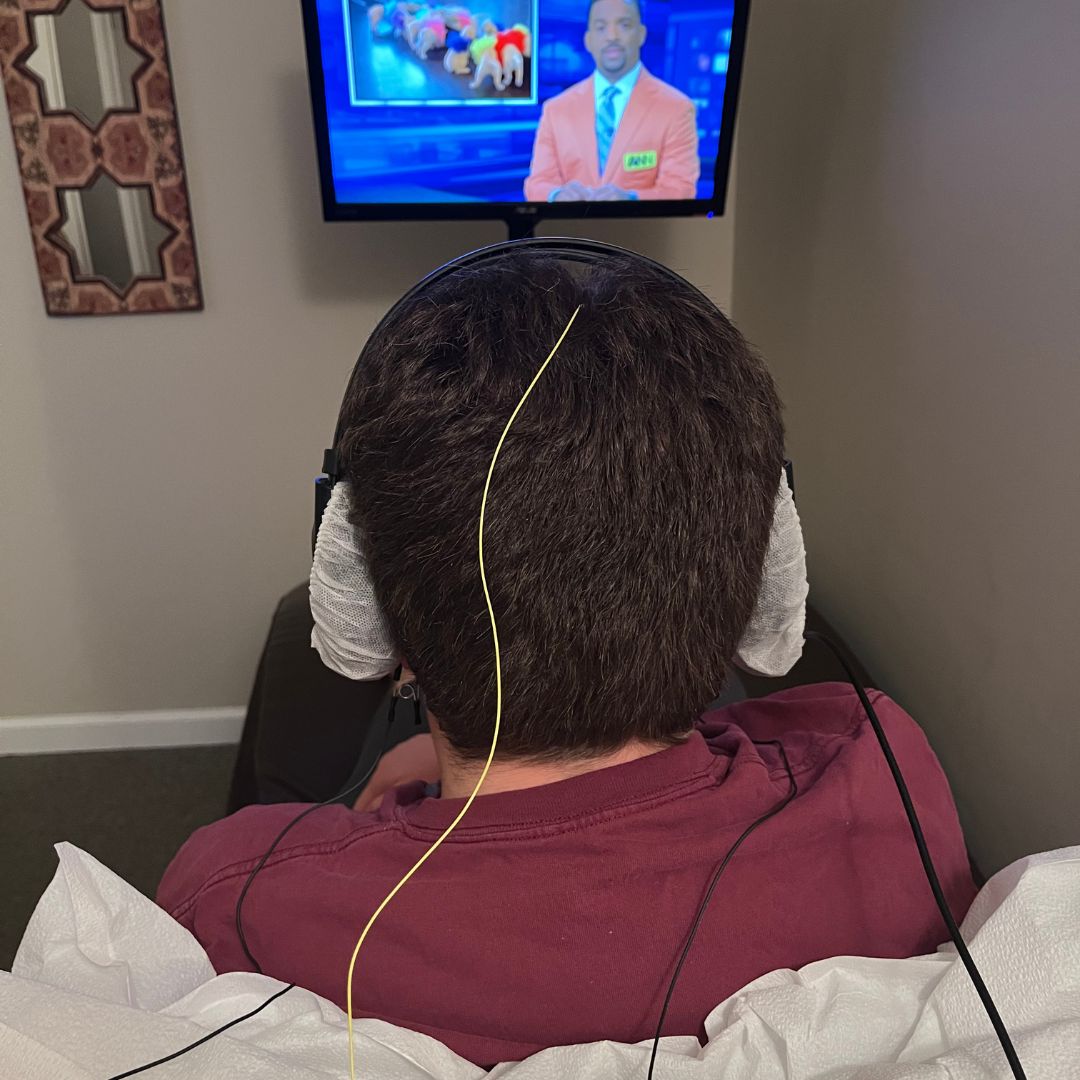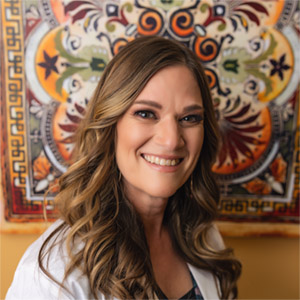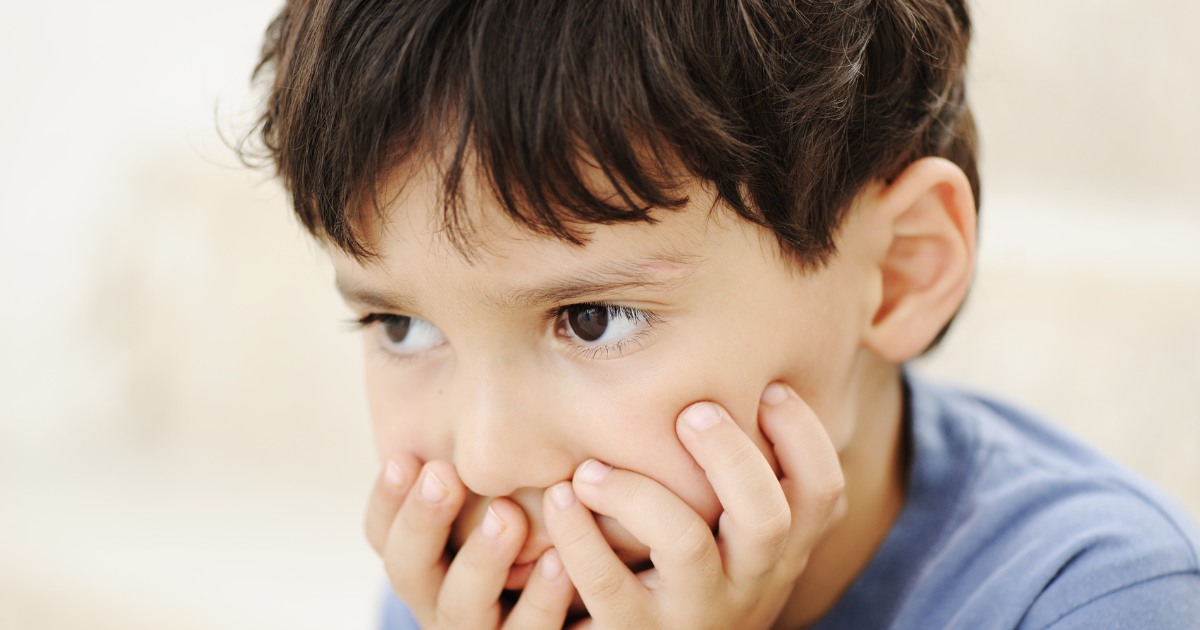Many children struggle with symptoms of ADHD or anxiety, and some experience both. ADHD causes inattention from underactive brain systems, while anxiety causes inattention from overwhelming fear. Neurofeedback trains the brain to regulate itself, offering a drug-free treatment that improves focus, reduces worry, and builds emotional resilience in children.
If you’re a parent worried about your child’s ability to focus, manage emotions, or succeed in school, you’re not alone. Many parents ask the same critical question: Is it ADHD or anxiety?
Both ADHD (Attention-Deficit/Hyperactivity Disorder) and childhood anxiety are on the rise. Both can cause children to appear distracted, restless, or overwhelmed. And both can impact your child’s academic success and emotional well-being.
But while these conditions share many overlapping symptoms, they require different types of support. Identifying the root cause of your child’s challenges is key to helping them thrive.
In this article, you’ll learn:
- The difference between ADHD and anxiety in children
- How to recognize symptoms of ADHD vs. anxiety
- Why children can struggle with both conditions
- How neurofeedback offers a powerful, drug-free solution for ADHD and anxiety
ADHD vs. Anxiety in Children: Why the Symptoms Overlap
It’s no wonder parents confuse ADHD symptoms and anxiety symptoms in children. Both conditions can cause:
- Inattention or distractibility
- Fidgeting and restlessness
- Trouble completing homework
- Forgetfulness
- Emotional outbursts or mood swings
- Difficulty with transitions
There are instances where children can have both ADHD and anxiety like one of our patients, Lucas. Before treatment, his ADHD and high anxiety levels made him struggle with emotional overwhelm and dysregulation, lack of motivation, ruminating thoughts, maintaining routines, completing tasks, and focusing. His symptoms also included inability to regulate himself, frequent and severe meltdowns, emotional shut down, and refusal to engage with others.
Like Lucas, many children actually experience both ADHD and anxiety1 at the same time. In fact, research shows that up to 40% of children with ADHD also have a diagnosable anxiety disorder (see
The reason? Both conditions involve dysregulation in brainwave activity, affecting a child’s ability to stay calm, focused, and emotionally balanced.
How to Tell the Difference Between ADHD and Anxiety
So how can you tell whether your child’s symptoms stem from ADHD, anxiety, or both? Here are four key clues to watch for:
1. What Drives the Inattention?
- With ADHD, inattention is caused by an underactive or dysregulated attention system. Children are easily bored and impulsive, even when not feeling anxious.
- With anxiety, inattention often happens when the child is overwhelmed by worry or fear, especially about mistakes, social situations, or unfamiliar settings.
2. How Does Your Child Respond to Structure?
- Kids with ADHD may continue to struggle with organization, focus, and behavior even in highly structured environments.
- Kids with anxiety often feel better in calm, predictable settings; routines and reassurance can dramatically improve their symptoms.
3. Is Worry a Central Theme?
- While children with ADHD may feel frustrated or upset, ongoing worry is not typically their core experience.
- Persistent worry, fear, or perfectionism are red flags for anxiety. Anxious children may ask for constant reassurance or avoid situations they fear.
4. When Did Symptoms Start?
Anxiety symptoms may appear later or fluctuate depending on life events, school pressure, or social dynamics.
ADHD symptoms usually appear early — often before age 7 — and are consistent across home, school, and other settings.
Why the Right Diagnosis Matters
Getting an accurate diagnosis is essential. The best treatment for ADHD in children is not the same as the best treatment for childhood anxiety.
Misdiagnosing ADHD as anxiety — or vice versa — can delay effective care. In some cases, medication meant for ADHD can actually increase anxiety symptoms in a child whose primary challenge is fear-based.
That’s why it’s important to look deeper, and one of the best ways to do this is through brain-based assessment and training.
How Neurofeedback Helps ADHD and Anxiety Naturally
One of the most effective natural supports for ADHD and anxiety in children is neurofeedback. This non-invasive, drug-free brain training helps children improve focus, emotional regulation, and resilience by teaching the brain to function more optimally.
What Is Neurofeedback?
During a neurofeedback session, sensors placed on the child’s scalp measure brainwave activity. The child receives real-time visual and auditory feedback while watching a movie as their brain moves toward healthier patterns.
With consistent training, the brain learns to:
- Reduce distractibility and impulsivity (key in ADHD)
- Calm the fight-or-flight response (key in anxiety)
- Improve self-regulation and focus
- Support better sleep and mood stability

Neurofeedback for ADHD
Research shows that neurofeedback improves attention2, impulse control3, and executive function4 in children with ADHD. Many families turn to this natural option when they want to reduce or avoid medication.
Neurofeedback for Childhood Anxiety
Neurofeedback for anxiety helps train the brain out of hyper-alert patterns linked to fear and worry. Children learn to create calmer, more balanced brainwave activity, leading to greater emotional resilience and confidence.
Why Families Choose Neurofeedback
Neurofeedback is a drug-free and non-invasive treatment suitable for all children struggling with ADHD, anxiety, or both. Its capability is undeniable, as proven by decades of research in neuroscience and clinical society, and our patients’ experiences.
Lucas experienced great improvements from Neurofeedback. Not only did he struggle less with anxiety and become able to move on from things that previously kept him stuck, but his daily mood also did a complete 180. Today, Lucas is much happier and more motivated to experience new things. He has overcome lifelong fears, can focus on completing tasks, and can emotionally regulate himself to the point where meltdowns are rare. Lucas also has a greater desire to connect with others and doesn’t shut down as much when meeting new people.
Lucas’s parents have recognized the drastic improvements, stating that, “Getting him to do anything used to be a challenge and now Lucas is the one suggesting plans. Chores, personal hygiene – especially haircuts – and changes in routine are now much easier for Lucas, and for us!” They have also noticed that Lucas can now complete multiple assigned tasks on his own with minimal or no help.
Like Lucas’s case, Neurofeedback can be personalized to your child’s unique brain patterns for the most effective treatment. Your child will not simply experience masked symptoms, but long-term brain self-regulation that will improve their life drastically.
Next Steps: How to Help Your Child
If you’re unsure whether your child’s challenges are caused by ADHD, anxiety, or a combination of both, trust your instincts and seek professional guidance. At our practice, we use tools like QEEG brain mapping to objectively assess brainwave activity and identify the underlying patterns contributing to your child’s symptoms (click here to see the examples of the QEEG of a patient struggling with anxiety before and after the neurofeedback training.) This allows us to tailor a neurofeedback training program that addresses their specific needs. If you’re looking for a natural ADHD and anxiety support for children, neurofeedback may be the right choice for your family. When your child’s brain learns to function more calmly and clearly, they gain the freedom to succeed in school, friendships, and life.
Ready to Learn More?
Contact us today to schedule a free neurofeedback consultation or QEEG brain mapping session. Let’s help your child achieve their brightest potential with a calm mind and focused heart.
About the Author

Dr. Keri Chiappino, DC DACNB BCN
Dr. Keri Chiappino offers a unique, expanded approach to alternative healthcare. With the combination of neurological, orthopedic and chiropractic care, Dr. Chiappino works to restore normal nerve function to the body, promoting optimum health and wellness. Dr. Chiappino has distinguished herself as one of 1000 doctors worldwide achieving Diplomatic status on the American Chiropractic Neurological Board (ACNB), with more than 1000 hours in Chiropractic Neurological coursework. In addition to traditional Chiropractic and Chiropractic Neurological care, Dr. Chiappino also offers BrainCore neurofeedback therapy and our Smithtown office is an authorized BrainCore neurofeedback clinic in Smithtown, NY.
- Okyar, E., Bozatlı, L., Görker, I., & Okyar, S. (2023). Anxiety and Somatic Symptoms in Children and Adolescents Diagnosed with Attention-Deficit Hyperactivity Disorder. Psychiatry journal, 2023, 5523312. https://pmc.ncbi.nlm.nih.gov/articles/PMC10425248/ ↩︎
- Pahlevanian, A., Alirezaloo, N., Naghel, S. et al. Neurofeedback Associated with Neurocognitive-Rehabilitation Training on Children with Attention-Deficit/Hyperactivity Disorder (ADHD). Int J Ment Health Addiction 15, 100–109 (2017). https://doi.org/10.1007/s11469-015-9621-7 ↩︎
- Bluschke, A., Broschwitz, F., Kohl, S. et al. The neuronal mechanisms underlying improvement of impulsivity in ADHD by theta/beta neurofeedback. Sci Rep 6, 31178 (2016). https://doi.org/10.1038/srep31178 ↩︎
- Yu, S. H., Tseng, C. Y., & Lin, W. L. (2020). A Neurofeedback Protocol for Executive Function to Reduce Depression and Rumination: A Controlled Study. Clinical psychopharmacology and neuroscience : the official scientific journal of the Korean College of Neuropsychopharmacology, 18(3), 375–385. https://doi.org/10.9758/cpn.2020.18.3.375 ↩︎
